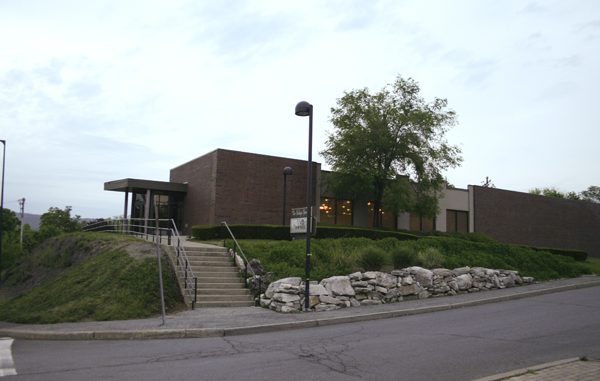
On Thursday, Sept. 12 at 2:32 a.m., the University Police Department (UPD) received a report of “hateful and threatening graffiti at College Terrace,” according to an email sent from President Wheeler’s office later that day.
Ryan Williams, the chief of the University Police Department, sent an email two weeks later on Thursday, Sept. 26 to all students providing an update into the investigation.
“Consistent with any ongoing investigation, University Police and the University have not shared, and do not plan to share, images of the derogatory and antisemitic slogans and symbols spraypainted on the building and on the patio at the College Terrace,” the email stated.
“There is no place for anti-Semitism, Islamophobia or hate of any kind on our campus.”
The graffiti, which was found on the east side face and west side patio of College Terrace, was discovered the same day that Students Supporting Israel (SSI), a student organization on campus, was set to hold a lecture hosted by activist Shabbos Kestenbaum in the same building.
“I was aware of the threatening statements graffitied on the walls of our lecture building. Ergo, I was more determined and insistent that the lecture continued as planned,” Kestenbaum said.
“Now more than ever, the Jewish community, and indeed SUNY New Paltz must resolve ourselves to combat the hatred and bigotry that seeks to divide us.”
The contents of the graffiti are unknown to the public, except for a lone image that circulated on the anonymous social media platform YikYak. The picture showed the east side of College Terrace with the words “genocide of 40,000+” spray painted.
Only the east side has been photographed and made public via YikYak. The west side of College Terrace also had graffiti, but the contents are not publicly known.
SSI’s faculty advisor, Rabbi Moshe Plotkin, was offered information directly from the university about the contents of the graffiti, but ultimately chose not to be informed.
“What the members of the administration told me was that [the graffiti in the image] was actually the least offensive … many other parts of the graffiti were much more pointed and offensive and hateful.”
The university’s reference to the graffiti as “hateful and threatening,” however, has sparked discussions about free speech and how hate speech is defined with regard to the current political climate.
New Paltz Students for Palestine (NPSFP), an unofficial student organization that has had an active presence on and off campus in coordinating efforts in support of Palestine, said in a statement to The Oracle, “The claim that the graffiti was ‘hate speech’ stems from the conflation that anti-Zionism is antisemitism, which it is not.”
“Institutions are revising their Title VI trainings to suppress political critiques of governments’ neocolonialist genocide into a fear-mongering conversation around national identity.”
Regardless of the graffiti’s contents, Plotkin wishes to see the campus community move past this incident.
“If the university’s strong message was strong enough to deter them, then why do we need to find them?” Plotkin said.
“If these warnings were enough to stop them from doing that again, I would be just as happy not having them be caught. I don’t want to see anybody punished.”
